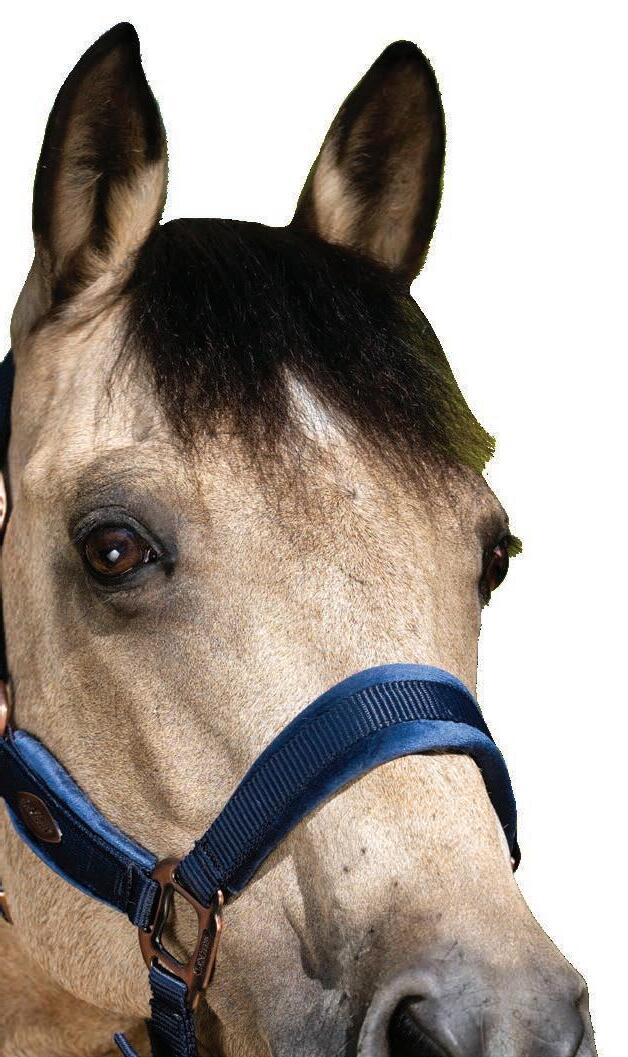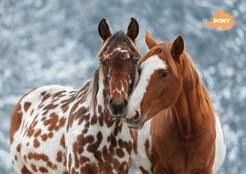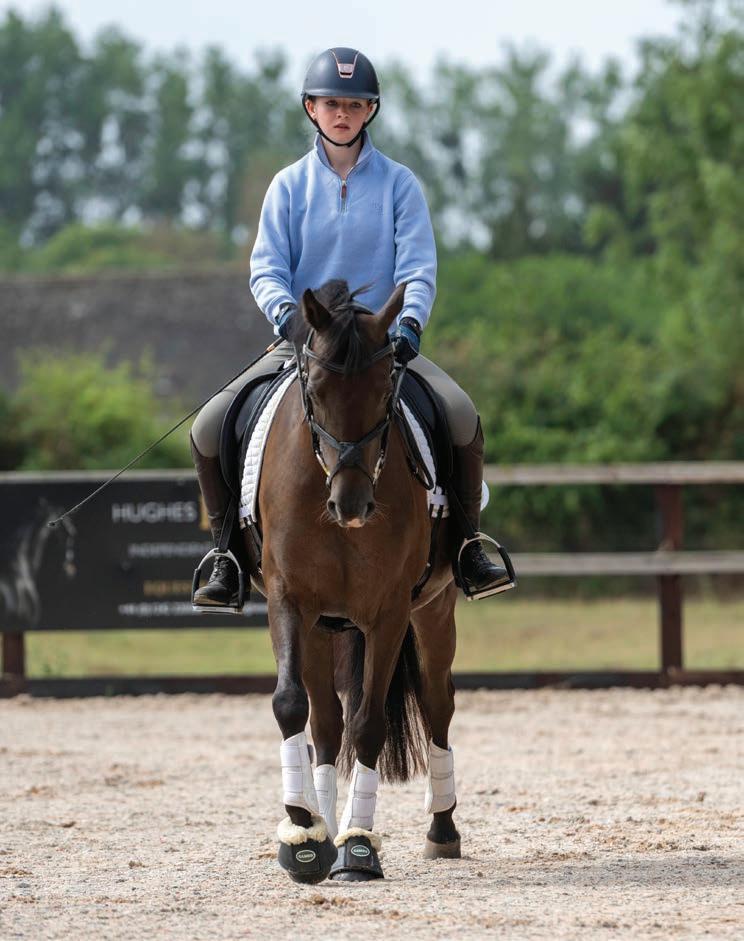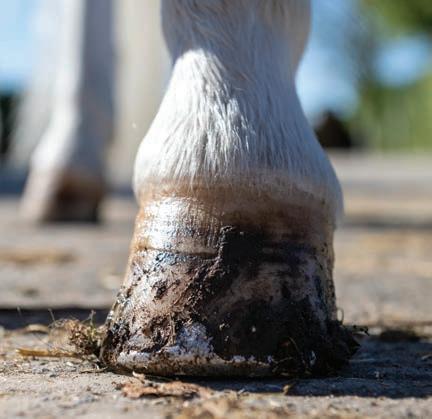




PONY magazine, Olive Studio, The Timber Yard, Grange Road, Tilford, Farnham, Surrey GU10 2DQ
Tel 01428 601020
Advertising enquiries 01428 601028
Email pony@djmurphy.co.uk
Team PONY
Editor-in-Chief Louise Kittle
Assistant Editor Sarah Burgess
Staff Writer Nicky Moffatt
Editorial Assistant Megan Xavier-Witherington
Head of Art and Design Sarah Garland
Deputy Head of Art and Design Adam Witt
Art Editor Paul Smail
Designer Lucy Claydon
Marketing Manager Lianne Tadd
Digital Marketing Manager Alex Uren
Marketing Assistant Emily Weeks
Marketing Co-ordinator Alison Hill
Content Creator Kirsty Lucas
Advertisement Manager Evie Edgar
Production Manager Eleanor Dunn
Executive PONY
Managing Director Zoe Cannon
Commercial Director Abi Cannon
Smooth operation PONY
Office Manager Vicki Owen
Accounts Manager Caroline Leishman
Accounts Executive Sarah Smith
Photography
Bob Atkins, Maxime David, 1st Class Images, Lucy Merrell, Ashley Neuhof, Peter Nixon, Jon Stroud. Jon Beard, Annabell Gsoedl, Rita_Kochmarjova, Abramova Kseniya, Paul Maguire, AnetaZabranska/ shutterstock.com. Nigel Baker/stock.adobe.com
PONY subscriptions 01442 820580
Back issues ponymag.com/shop
Digital issues Visit the App store or Google Play
Printed by William Gibbon & Sons Ltd. Distributed by Marketforce
PONY magazine and Charlie are trademarks and copyright of DJ Murphy (Publishers) Ltd. No part of this publication may be reproduced or transmitted in any form or by any means without prior written authority from DJ Murphy (Publishers) Ltd. While every effort is
Articles, photos and drawings are welcome but we cannot be liable for their safe return. Please enclose an SAE.
You can read our full terms and conditions, and privacy and cookies policy at bit.ly/PONY_TERMS and bit.ly/PONY_PRIVACY
The paper used in PONY is sourced from chain-of-custody certified manufacturers, operating within international environmental standards. This ensures sustainable sourcing of the raw materials and sustainable production.
We’re sorry, but it may not be possible to include cover gifts on copies of PONY distributed outside the UK.
PONY supports social media safety – to have a Facebook, Instagram, Twitter or YouTube account you must be at least 13 years old. Always get your parents’ permission, too.
PONY recommends you wear an up-to-standard riding hat at all times when mounted.





we are super excited for the London International Horse Show! Don’t miss the things we can’t wait to watch on page 20, plus we have an epic competition for you to win a VIP trip for your family, including access to the main arena for the Shetland Pony Grand National. Wow! Turn to page 24 to enter.
We’re keeping our festive mood going with puzzles (p66), a story (p60), and inspo for your Christmas list on p54. Until next month!



Write to us at PONY mag, Olive Studio, The Timber Yard, Grange Road, Tilford, Surrey GU10 2DQ or email pony@djmurphy.co.uk the team: If our ponies were an emoji...



Lou, PONY Ed Ted would be the party emoji.



Sarah, Assistant Ed Prince would be a teddy bear.




Alex, Marketing Halo would be the sleepy emoji.
WE KEEP WARM IN THE WINTER
There’s nothing like a hot chocolate after a chilly ride! Emily, Marketing Assistant
It’s got to be my long thick winter coat. I feel as snug as a bug on the yard or when I’m riding. Lucy, Designer All the gear on p30!






Learn all about riding shallow loops with our awesome tips and advice!

Riding different shapes and movements is mentally and physically beneficial for ponies, and makes schooling sessions way more fun. This month we’re talking all things shallow loops, from how to ride them to why and when. Let’s take a closer look!
Shallow loops are ridden down the long side of the arena, starting and finishing at the corner markers on the same side.
As you and your pony leave the first corner marker, head towards the centre line and then, when you get level with B and E, start heading back towards the next corner marker.
In dressage tests, shallow loops are usually 5m (halfway to the centre line) or 10m (passing through X) in size, so why not have a go at both?

did you know?did you know?
WW Shallow loops should be symmetrical, so the line you ride away from the track should look the same as the one you ride back towards it.
top tip
It’s best to get to grips with shallow loops in walk before attempting them in trot.

Think you’d like to give shallow loops a try? Here’s what to do…
1. Use the first corner to bend your pony around your inside leg, keeping a contact on the outside rein to support his shoulder.
2. As you reach the first corner marker, channel your pony between both legs and reins, and ride a curving line away from the track.
3. Aim to reach the furthest point from the track when you get level with B and E. Just before you reach it, change your pony’s bend slightly so he’s flexed towards the long side you started from. Then, gradually head back towards the second corner marker.
4. As you approach the end corner marker, change your pony’s bend back to the inside.

did you know?did you know?
WW Shallow loops can be ridden in canter, but don’t attempt this until your instructor says you and your pony are ready.
top tip
Put a cone just inside the 5m or 10m point of your loop (level with B and E) so you have a marker to aim for.

What’s the point?
If you’re planning to do some dressage with your pony, you’ll need to nail shallow loops, but even if dressage isn’t your thing, there are sooo many great reasons to give shallow loops a go. They help ponies…
• improve their suppleness and straightness
• develop better balance
• become more co-ordinated
• enjoy schooling sessions more
We share our tips to help you ride confidently out in the open!

Exploring new hacking routes is so much fun, but do the open spaces make you nervous? Or does your pony get a little too excited sometimes? We share our tips so you can feel confident adventuring with your equine bestie!
Why does it feel different?
Riding in an arena feels familiar – you’ve got clear boundaries and usually fewer surprises. But once you’re out in the open, there are lots of different sights, sounds, and smells, not to mention wildlife and
imaginary monsters lurking in the bushes! As with most things, practice makes progress, but the foundations remain exactly the same – whether you’re riding in an arena or out in the open!

“My pony can be spooky”
The key to riding a spooky pony out hacking is to keep him focused. Ride lots of transitions – even if it is just walk-halt-walk – or ask him to do some gentle lateral work exercises, like leg yield or shoulder in. This way, your pony will be focused on you, instead of what’s around him. If he does spook, take a deep breath and confidently ask him to walk on. Keep your legs squeezed around his sides and a soft, even contact on both reins.
Remember to keep talking to him, too. By you showing him that everything is okay, he will learn to trust you and, in time, walk past whatever you meet that worries him.
Avoid cantering in the same place each time so your pony doesn’t learn where he can go zoomies!
“I’m worried I’ll lose control”
Worrying about your pony becoming strong out hacking is common, but thankfully there’s lots you can do to prevent this from happening!
The first thing to do when out hacking is to make sure you’re wearing the right tack, so speak to your instructor for advice. Fitting a martingale, for example, might give you a little bit more control and security.
Next, go right back to basics. While in the school and then when you’re out hacking, practice riding different transitions to check your pony is on your aids, mixing them up so your pony doesn’t predict what move is coming next. If you ever feel like you’re going to struggle to control your pony, take a deep breath and then ride a downwards transition or a circle to regain his focus.
Hacking with a confident rider with a very sensible pony who won’t try to race or encourage your pony to go faster is a good idea, too.


Follow our tips to keep your pony’s hooves in top condition!
Winter can be really tough on your pony’s hooves, but keeping his feet healthy and in good condition is vital for his overall wellbeing. Let’s find out how to take the very best care of our ponies’ hooves while it’s cold and wet.
The three most common winter hoof problems are…

Winters in the UK are often very wet and muddy, which means ponies’ hooves can get super-soft if they’re standing on wet ground for long periods of time. The softening of hooves is the main culprit of winter hoof problems because it means the bad bacteria can creep in – uh-oh! So, you might be thinking that
when your pony comes in from the field you have to dry his hooves as soon as possible, but this can actually cause the moisture levels to change too quickly, resulting in other problems, such as cracking. Therefore, the key is to keep changes in moisture to a minimum through good paddock maintenance and daily hoof checks.
1. Cracking – from changing moisture levels.
2. Abscesses – caused by bacteria entering softened hooves.
3. Thrush – a bacterial infection that affects the frog and heel.
WW Changes in moisture levels and the cycle of wet-dry-wet causes the hoof wall to expand then contract and expand again, which can lead to loose shoes, cracks and other problems. did you know?did you know?


WW Hooves grow more slowly in winter, but that doesn’t mean your farrier routine should change! It’s just as important to stick to your usual trimming or shoeing cycle so your farrier can check for any problems and stop them getting worse.

Providing your pony with clean, dry bedding in his stable or field shelter will help support his overall hoof health. Having a soft, safe surface to stand on will allow his hooves time to dry out naturally.
It’s important to pick out your pony’s feet at least once a day (ideally, when he comes in from the field and also after you’ve ridden) to remove dirt and mud and to check that nothing has become stuck and his shoes, if he wears them, are still secure and in good condition. When doing your daily hoof checks, look for…
• any cracks in or damage to the hoof wall
• excess wear on the sole of his foot or shoes
• risen clenches that could lead to a loose shoe
• black discharge around the frog and heel bulbs
If you spot any of these signs, contact your farrier or vet for advice.
In some cases, hoof dressings can help maintain moisture levels so ask your farrier for advice on what product would be best for your pony’s situation.
Spraying the soles of your pony’s feet with an antibacterial spray, or one specially designed for hoof support, can help reduce the chance of infection.
If there are any areas in your pony’s field that get ultra-muddy in winter, ask an adult to help you lay mud mats (ideally, before the mud gets really bad!) or fence off the area. This will help reduce the time your pony spends standing in the mud!

